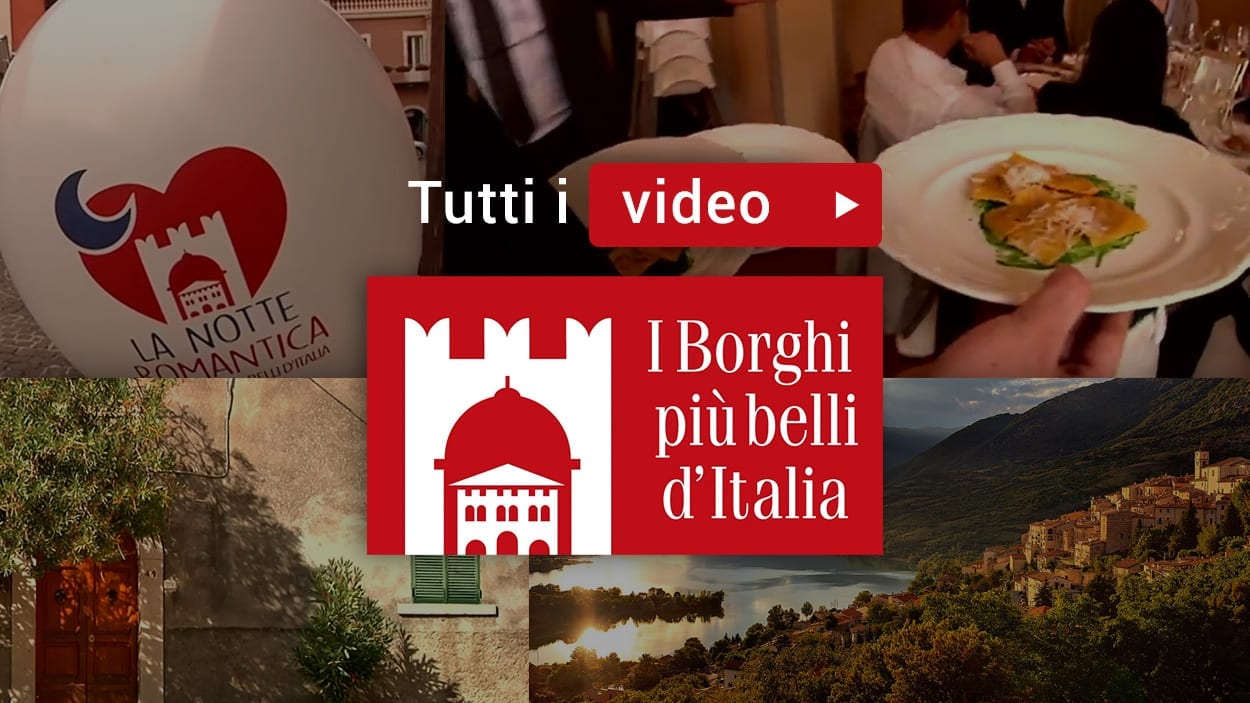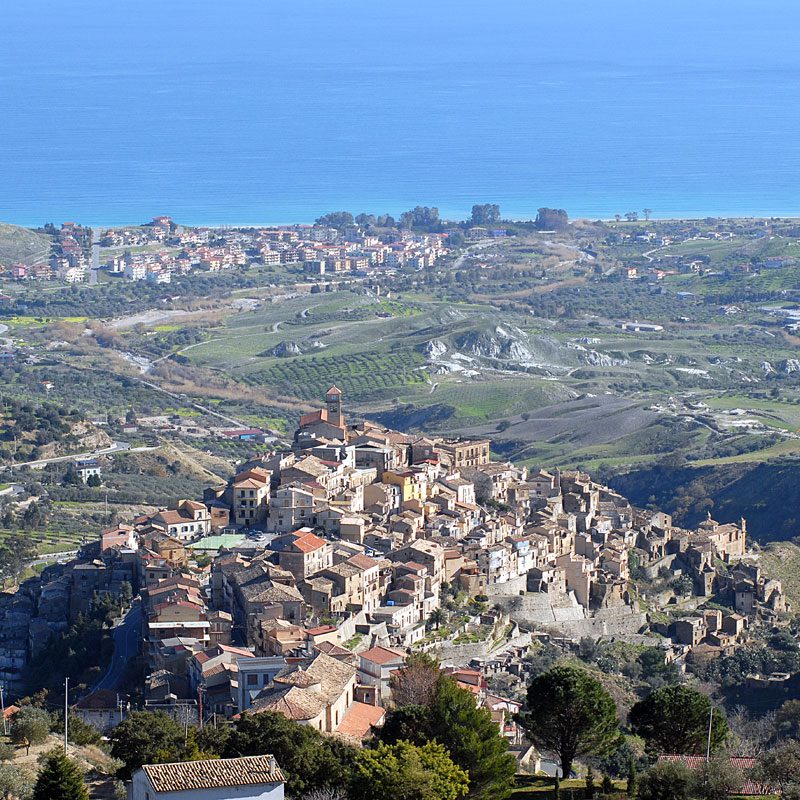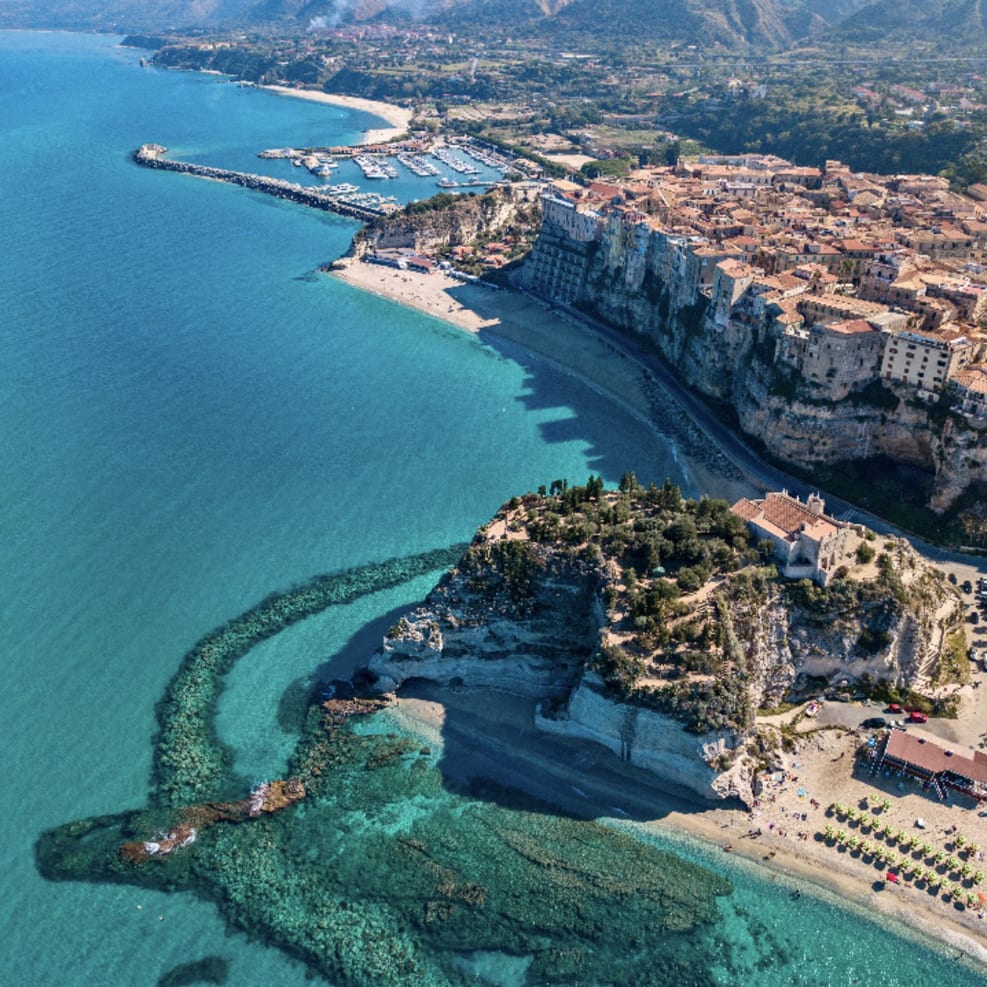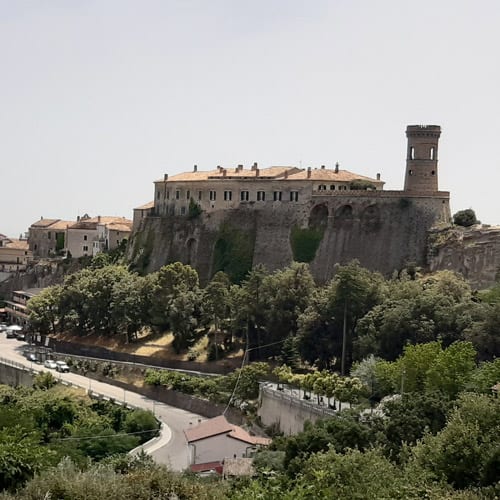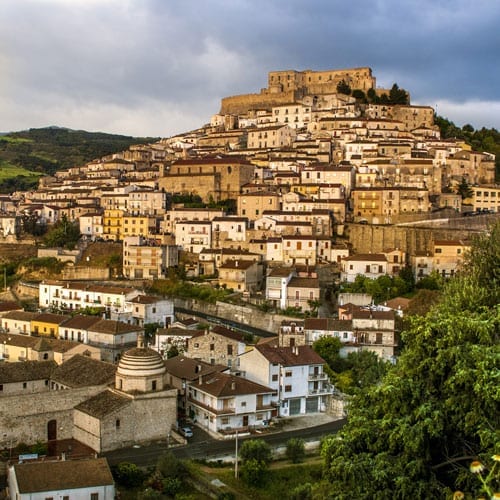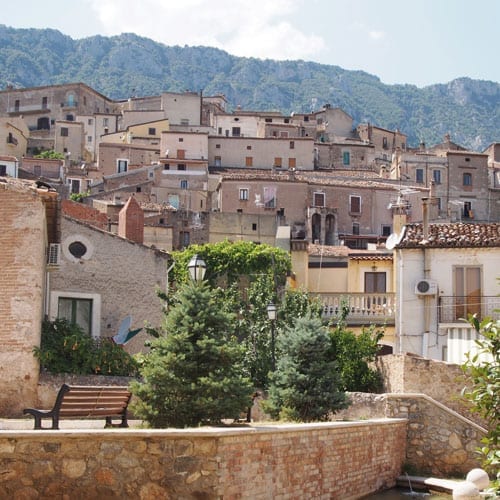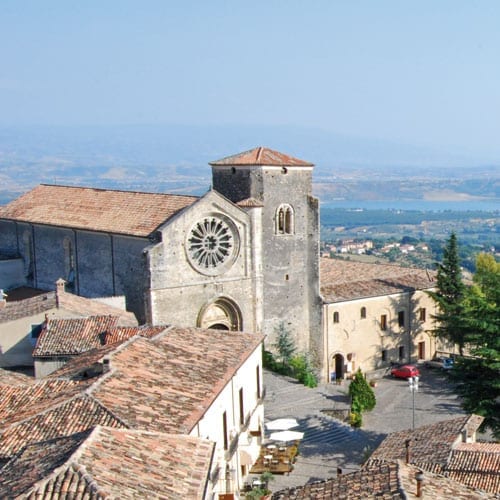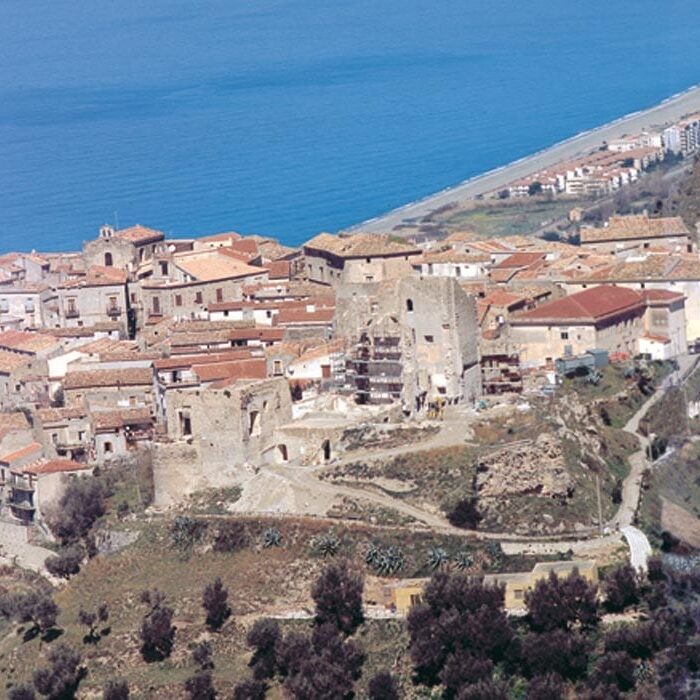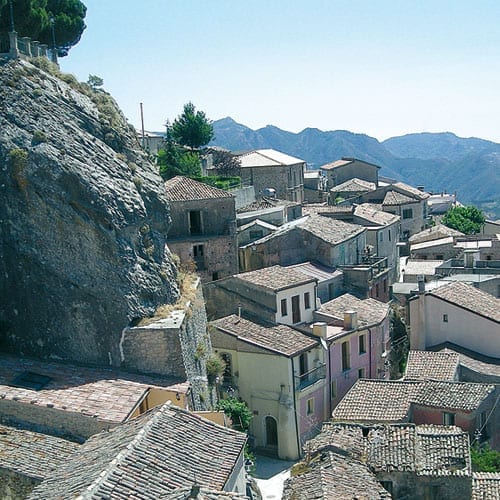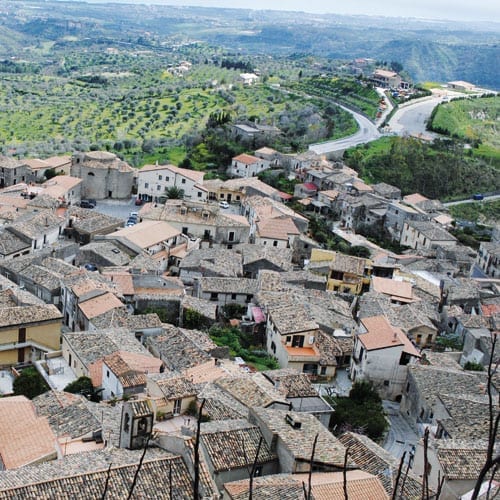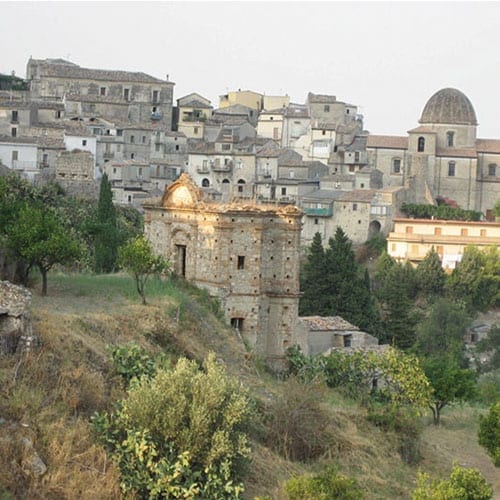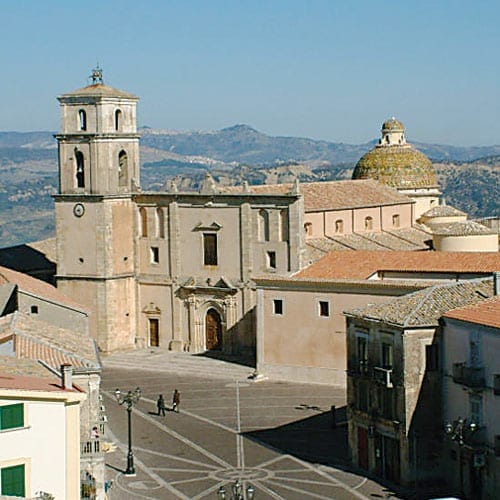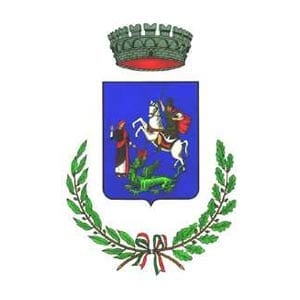 Oriolo
Oriolo
MUNICIPALiTY OF oriolo
(Cosenza District)
Altitude
mt. 450 a.s.l.
POPULATION
2300
Patron saint
San Giorgio, April 23rd
TOURIST INFORMATION
Town hall, via Pietro Toscani 75 – Ph. 0981 930870
www.comune.oriolo.cs.it

Documents of the XII century in Greek language bear the toponym Orzoùlon e Orgiòlou, deriving from the Latin Hordeolus, i.e. “ barleycorn”.
Oriolo has a seventeenth-century urban plan: the noble palaces overlook the main road, which crosses the entire town and links the residence of the feudal lord with the fifteenth century walls, reduced to ruins. In front of the castle stands the Chiesa Madre (Mother Church) dedicated to St. George, of Norman origin, as shown by the two lions guarded at the central door, dating back to 1264. Inside, the statue of Madonna and Child, of the fifteenth century and the monumental Baroque wooden altar are remarkable.
The Mother Church houses relics of San Giorgio and San Francesco da Paola, a collection of silver, a statue of the seventeenth century, an eighteenth-century Ecce Homo in terracotta, the terracotta floor and the crypts of the primitive church.
Recently restored, the castle erected by the Sanseverino’s preserves the old structure with two guard towers and the doorman.
The products of the country houses of the area are all local products: meats produced in the farms, garden and home-made products, such as the furzuli with crunchy bread crusts and the rascatelli , with ricotta cheese and peppers.



